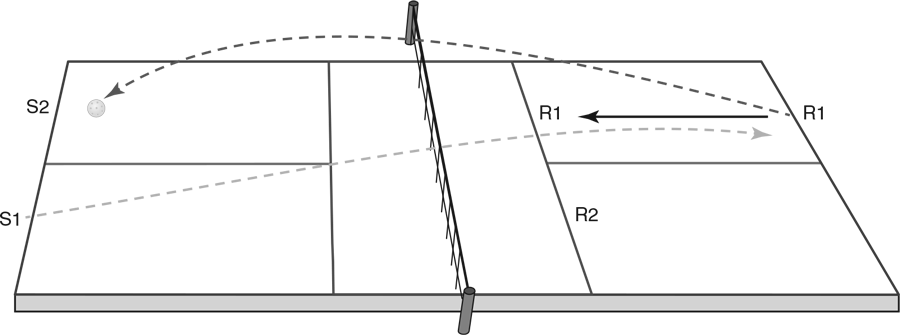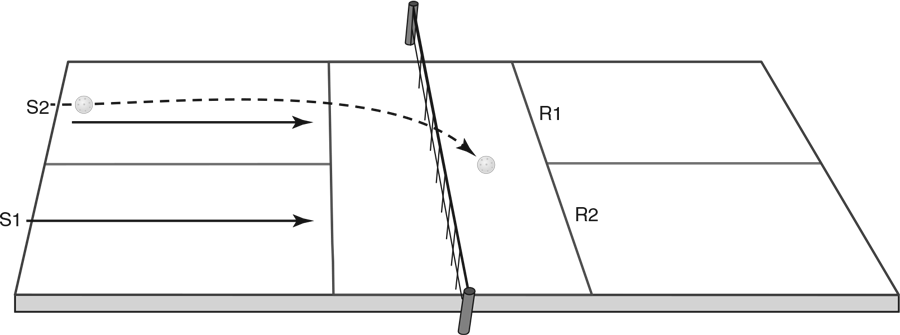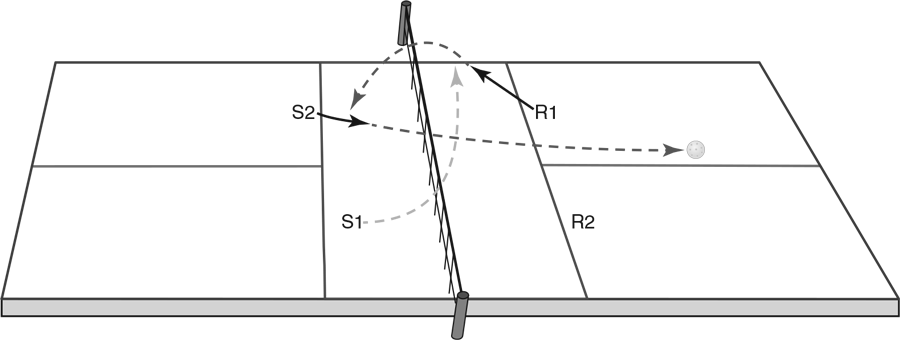Practice the Ideal Doubles Sequence
This is an excerpt from Pickleball Fundamentals-2nd Edition by .
Practicing the ideal initial three-shot sequence in a controlled situation helps make it automatic for you in a competitive situation. Get together with three other players who, like you, want to learn and practice the sequence. Before the ball is contacted on each serve, focus on your role in that particular rally. What will your next shot be? What should it feel like? Where should you aim? Strengthen or loosen your grip depending on your next anticipated shot. Remind yourself about what you should focus on. Talk to yourself!
- Server: “My first shot is the serve. My second shot, if the ball comes to me, will be a drop shot, or a low, hard drive down the middle, after which I go to the net with my partner.”
- Server’s partner: “I stay back by the baseline while my partner serves. If the return of the serve comes to me, I return it off the bounce with a drop shot or drive, after which I go to the net with my partner.”
- Receiver of serve: “I return the serve slow and deep and then go to the NVZ line to join my partner and get ready for the next shot.”
- Receiver’s partner: “I’m in a ready position at the NVZ line. I track the ball as it’s served and then returned by my partner, looking for an ‘out’ serve for them so they can concentrate on their return. I’m ready for my first shot, which will be either a volley or a dink.”
- And every single player, on every shot, should adopt a balanced ready position, paddle out in front of them and poised for a quick response to any shot coming their way.
S1 serves the ball to R1. R1 returns the serve slow and deep to S2 (figure 10.9) and then moves to the NVZ line.

S2 hits a drop shot to the middle of the court (figure 10.10), then both S1 and S2 move quickly to the NVZ line.

S1, S2, R1, and R2 are all at the net. R2 dinks to S2. S2 dinks to R1 (figure 10.11), who then dinks to S1.

S1 dinks crosscourt to R1. R1 hustles over to get it. In an attempt to dink it back, R1 hits the ball too high. S2 sees that it’s high, checks to be sure of being outside the NVZ—and volleys it aggressively down the middle of the receiving team’s court (figure 10.12). Point! (But since this is just a practice, no point!)

Return to your previous serve positions and have the same server serve the ball again. Have that server serve three times to start the shot sequence. Play out each rally, but don’t score points. Then have the same server serve three times from the left side. After those six rallies, give the serve to the other side. They then do the same thing. At this point, two of the four players have served. Players on each team switch positions with partners so that the player who hasn’t yet served now serves from the right side. Continue this controlled practice until all four players have been in each position.
More Excerpts From Pickleball Fundamentals-2nd EditionSHOP

Get the latest insights with regular newsletters, plus periodic product information and special insider offers.
JOIN NOW


